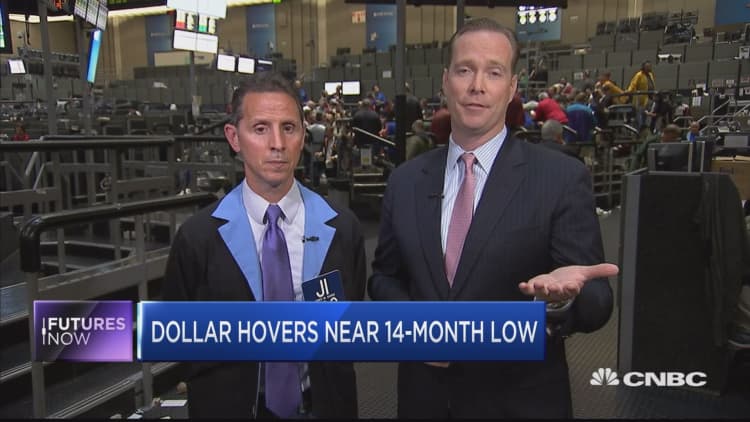
Oil prices plunged back below $49 a barrel on Tuesday after more reports that OPEC's output rose last month despite the cartel's deal to slash production.
A survey of analysts conducted by Bloomberg News suggested OPEC's July output rose by 210,000 barrels a day. Separately, market-monitoring firm Petro-Logistics said the producer group's output was up by 145,000 barrels a day last month.
On Monday, Reuters reported its own survey implied a jump of 90,000 barrels a day from OPEC members.
U.S. West Texas Intermediate crude prices tumbled to a session low of $48.37 and ended Tuesday's session down $1.01, or 2 percent to $48.16. The contract hit a nearly 10-week high at $50.43 earlier in the session, after breaking above the key $50 level for the first time in two months on Monday.
U.S. WTI two-day performance
International Benchmark Brent crude futures were trading down $1.04, or 2 percent, at $51.68 per barrel, by 2:39 p.m. ET (1839 GMT), after earlier slipping from a nearly 10-month high just below $53 a barrel.
Prices were mostly lower on Monday, but surged ahead of the session's close to settle above $50 a barrel for the first time since May. Analysts told CNBC crude oil futures face resistance to further gains after surging about 9 percent last week.
"I think that we were poised for a sell-off because at above $50 the market looked frothy," said Tamar Essner, director of energy and utilities at Nasdaq Corporate Solutions.
"I think that the recent runup in prices reflected that the market sentiment had gone from bad to less bad but not outright bullish with any conviction."
U.S. crude prices hit technical resistance near the session high of $50.40, according to John Kilduff, founding partner at energy hedge fund Again Capital.
The rise in OPEC production was not unexpected following Monday's Reuters survey, he said, but the sharp drop on Tuesday indicates that investors perhaps bid up oil too much after Saudi Arabia vowed export cuts last week.
"People keep taking them at their word and giving it to much credit, and then the rug gets pulled out," Kilduff said.

Oil exporters participating in the OPEC-led production cuts, including Saudi Arabia and Russia, will meet on Monday and Tuesday to discuss how to improve compliance with the deal.
OPEC's crude output has been on the rise in recent months, led by Libya and Nigeria, which were exempt from the deal as they restored supplies sidelined by internal conflicts. That supply has come back more quickly than many market watchers anticipated.
The producers have agreed to reduce supply by 1.8 million barrels a day through next March. The goal is to shrink global stockpiles of oil and balance the market after about three years of persistent oversupply that has weighed on crude prices.
The market is awaiting weekly data on U.S. crude oil stockpiles, with analysts expecting a drop of 2.9 million barrels, according to a Reuters survey of analysts.
Industry group the American Petroleum Institute releases figures at 4:30 p.m. on Tuesday, followed by more comprehensive data by the U.S. Energy Information Administration on Wednesday morning.


